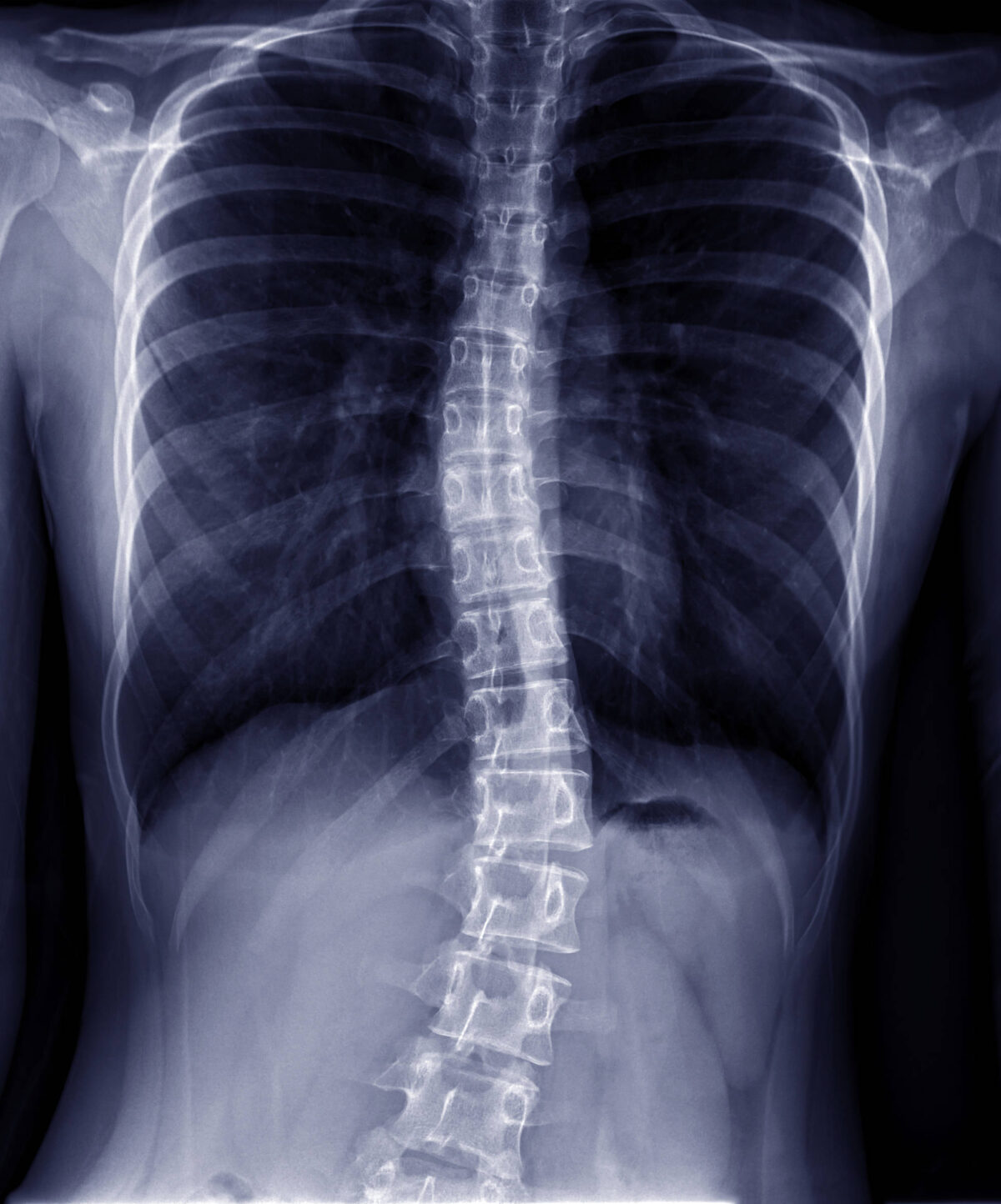Anesthesia Considerations for Patients with Scoliosis

Scoliosis is classified as a lateral curvature of the spine of at least 10° as defined by the Cobb angle, combined with a rotation of the vertebrae within the curve.1 Scoliosis can be congenital, neuromuscular, or idiopathic, with the majority of cases falling into the latter category. When the angle of scoliosis reaches 40° it is considered severe, and is often accompanied by a range of cardiovascular or respiratory conditions since the scoliosis results in a deformity of the thoracic cage as well. As a result, patients with scoliosis may require additional evaluation prior to anesthesia.
This deformity displaces several intrathoracic organs and moderate to severe scoliosis diminishes the chest wall and impedes lung compliance, posing additional respiratory issues, including an increased risk of restrictive lung disease and respiratory failure.2, 3 Severe scoliosis also often affects airway function due to tracheal and bronchial deformity which is especially exaggerated in patients with kyphoscoliosis—a combination of extreme rotation of the vertebral column and scoliosis.4-6
With this in mind, preoperative assessment, especially airway evaluation, is necessary for patients with scoliosis prior to administration of anesthesia. This assessment should include a history of the patient’s cardiovascular and respiratory issues and an evaluation of possible comorbidities. Applied in conjunction with a typical examination, practitioners should be able to determine the appropriate anesthetic technique for the patient.5 Most patients with mild or developing idiopathic scoliosis can tolerate general anesthesia without complications if no cardiopulmonary abnormalities are found. Alternatively, in cases where there are no abnormalities present but scoliosis has manifested a curvature in the trachea, the suggested course of action is a nasotracheal intubation (using a nasal endotracheal tube [ETT]), assisted by laryngoscopy.4, 6 Correct placement must be confirmed to avoid bronchial intubation and subsequent unilateral lung ventilation.4, 6 Other methods of preparation for scoliosis patients with a difficult airway include preoxygenation and supplemental oxygen on standby.
For patients with more severe scoliosis and/or abnormalities that would indicate risk of cardiopulmonary complications during the induction of anesthesia, neuraxial (regional) anesthesia is recommended, as there is a higher mortality rate associated with general anesthetic procedures.6, 7 For some, a combination of neuraxial and light general anesthesia may be deemed appropriate. In most cases of scoliosis, neuraxial anesthesia is more difficult than normal due the manner in which the back and its landmarks are visibly warped or distorted in one way or another, hindering insertion accuracy.7 This again reinforces the necessity of a thorough physical examination of the patient, along with an analysis of their medical history, prior to operation and the planning of anesthesia.
To summarize, the planning of anesthesia for patients with scoliosis should include the following steps. First, a history and physical exam should be performed to evaluate the severity of the scoliosis and reveal any comorbidities. Next, practitioners should assess their options—general or neuraxial anesthesia or a combination of the two—and relay the risks and benefits of each to the patient. The anesthesiologist should also plan the patient’s extubation in the case of general anesthesia. Each scoliosis patient requires careful accommodation to minimize airway and cardiopulmonary complications during anesthesia.
References
- Janicki, J. A., & Alman, B. (2007). Scoliosis: Review of diagnosis and treatment. Paediatrics & Child Health, 12(9), 771-776.
- Tsiligiannis, T., & Grivas, T. (2012). Pulmonary function in children with idiopathic scoliosis. Scoliosis, 7(1), 7.
- Koumbourlis, A. C. (2006). Scoliosis and the respiratory system. Paediatric Respiratory Reviews, 7(2), 152-160.
- Kishimoto, T., Hayashi, S., Nakanishi, Y., Goto, T., Kosugi, K., & Sakurai, S. (2020). Use of the Microcuff® During General Anesthesia for Patients With Scoliosis. Anesthesia Progress, 67(1), 23-27.
- Kafer, E. R. (1980). Respiratory and cardiovascular functions in scoliosis and the principles of anesthetic management. Anesthesiology: The Journal of the American Society of Anesthesiologists, 52(4), 339-351.
- Saraçoğlu, K. T., BAYGIN, Ö., & KAFALI, İ. H. (2015). Kyphoscoliosis and difficult airway management. İstanbul Bilim Üniversitesi Florence Nightingale Tıp Dergisi, 1(1), 43-47.
- Rossi, I., Varaday, S., Abir, G., & Brown, J. (2017). Neuraxial anesthesia for scoliosis and previous spinal surgery in pregnancy. Anesthesia Tutorial of the Week. World Federation of Societies of Anaesthesiologists. https://www.wfsahq.org/components/com_virtual_library/media/7c4578c877cc2a4b423755b96f79edb4-ATOTW-350.pdf
